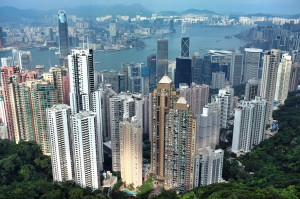
Hong Kong by Michael Villarmia via flickr
China’s Pearl River Delta (PDR), the largest urban area in the world in both size and population, has been called the “factory to the world.” (Link to an economic profile here). It is a megapolis linking nine major cities into one huge economic region. In 2013 it accounted for nearly 10% of China’s entire GDP, and employed over 10 million people.
But new government policies are about to change this. China’s new five-year economic plan (2015-2020) calls for a massive investment of $154 billion to replace human workers with automation. The city of Guangzhou, for example, intends to automate 80% of its manufacturing by 2020. This article from the South China Morning Post explains more.
Foxconn, a company notorious for poor working conditions (it once installed safety nets to prevent employees from jumping off their buildings) is attempting to replace workers with robots. Their initial announcements were to replace 70% of their assembly line workers with robots in 3 years but they have since reduced this to 30% over the next five years. This set-back is more a reflection on the poor quality of the first generation of “Foxbots” than of any change of heart over replacing workers. (Million Robot Revolution Delayed link).
Some are predicting that after the government subsidies end most of the Chinese robotics companies created by this incentive will go out of business since China lags behind in robotics technology. It will however be of interest to see how this massive experiment plays out, and what pressures it puts on the global economy to follow suit.
Leave a Reply